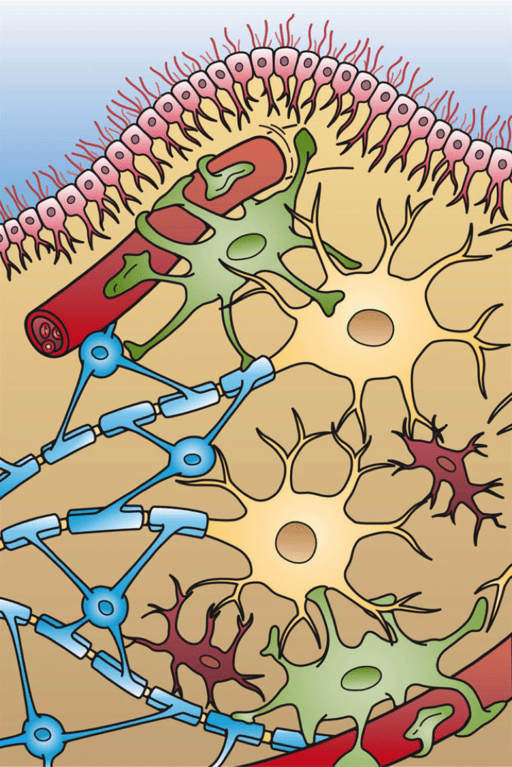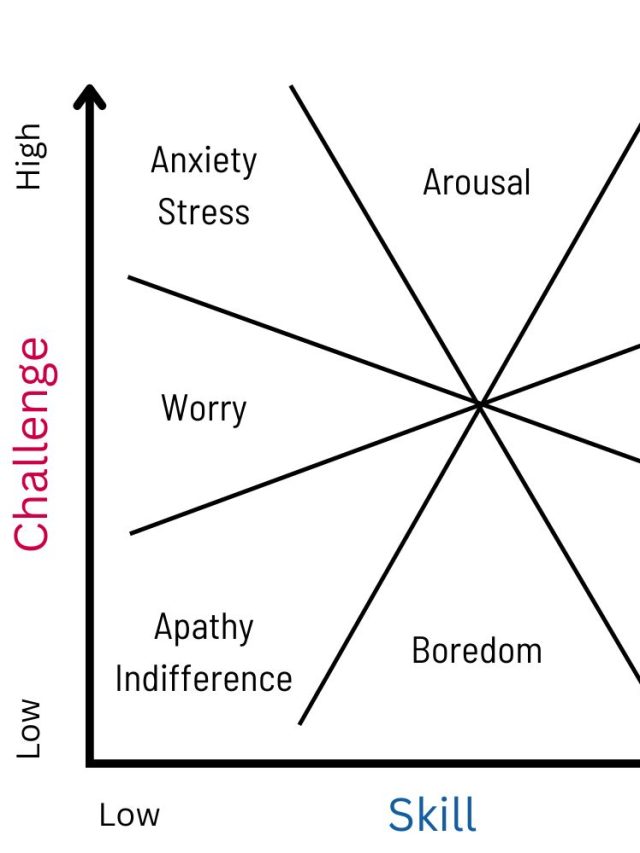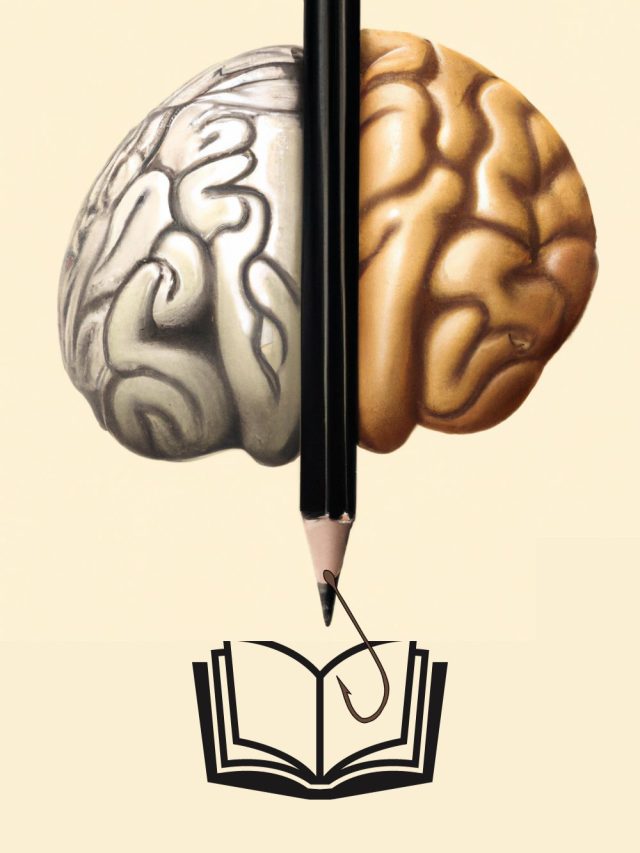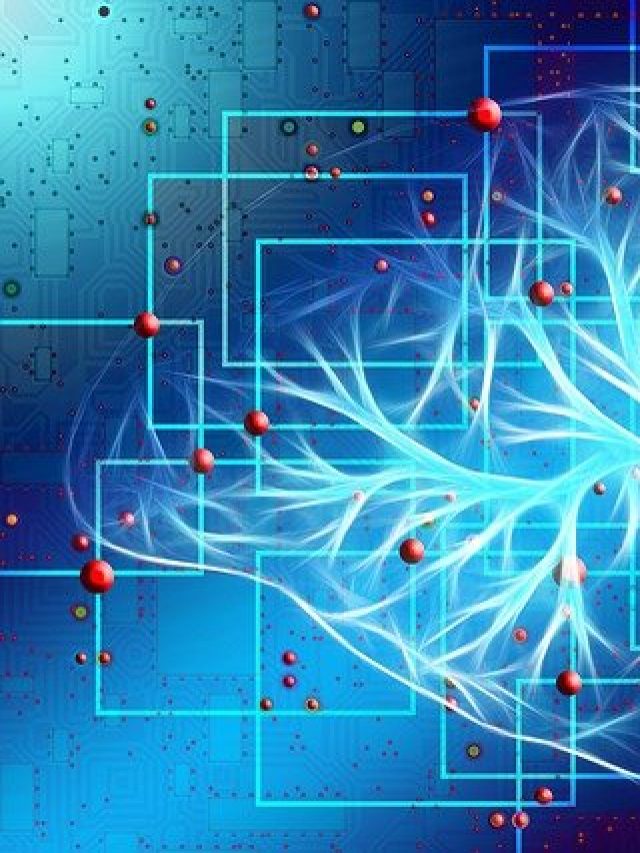Here is a curated list of verified psychology facts and misc. trivia about the brain, mind, and behavior. Have fun reading and learning about your unique brain! If you want to share all of these facts without their explanations, copy-paste them from the Table of Contents (end of the article on mobile and right side on the desktop; and don’t forget to cite your source – Cognition Today :))
- 1. Looking at puppies and kittens can temporarily make us more careful, focus our attention, and enhance fine-motor dexterity. This is the Kawaii effect.
- 2. A small number of people derive no pleasure from music and some can’t even comprehend it.
- 3. Moving your eyes side to side for 30 seconds can temporarily improve your memory for recently learned content. But only when you are right-handed.
- 4. You can fake genuine eye contact by looking anywhere on the face consistently, preferably the forehead, nose, between the eyes or mouth (the eye contact illusion).
- 5. Cursing with the F-word can reduce perceived pain, push the pain threshold and increase pain tolerance by 30%.
- 6. Your reading speed increases when you use sans-serif fonts instead of serif fonts.
- 7. Our brain pulses like our heart, ever so slightly.
- 8. Desserts served in round plates are perceived to be sweeter than those in other types of plates.
- 9. Coffee is expected to be more aromatic when served in narrow mugs as compared to wide mugs. Wide mug coffees are expected to be sweeter.
- 10. Neurons undergo a recruitment process where some neurons win and represent information. The recruited neurons stay, and others die.
- 11. We easily groove to bassy music because we process time better with low frequency sounds.
- 12. Humans perceive pain and heat via very similar sensory mechanisms. Sometimes we cannot differentiate between the two.
- 13. Multitasking is possible as long as one of the tasks you are doing is highly automatic and you are excellent at switching quickly between the two.
- 14. People like faces that approximately match their names more than faces that don’t. This, sometimes, is the basis of naming pets and babies.
- 15. Subtitles while watching videos are great for comprehension and improve our ability to listen even though they “feel” like a distraction.
- 16. Studying 2 or 3 similar topics in parallel in small chunks is more effective than full-blown hours of study on a single topic.
- 17. The feeling of falling down while sleeping is called a “hypnic jerk” and it occurs because the disconnect between the muscles and the brain is interpreted as “falling”.
- 18. Women perform better on math and verbal tests at higher temperatures, while men perform better on the same tests at lower temperatures.
- 19. We yawn to regulate the temperature of the brain, and cooling your neck with an icepack for 5 minutes can reduce your chances of yawning by 50%.
- 20. We are often more creative while solving other people’s problems than our own.
- 21. Most people hallucinate sounds, music, and even their own names before sleeping.
- 22. For the 80-100 billion neurons that make up your conscious and subconscious mind, there are another 80-100 billion that do all the housekeeping work behind the scenes: The majestic Glial cells
- Sources
1. Looking at puppies and kittens can temporarily make us more careful, focus our attention, and enhance fine-motor dexterity. This is the Kawaii effect.
Explanation: Our best understanding is that cute things make us approach them with a narrow cognitive scope. That means we are more motivated to engage with cute things with a more focused form of attention that chooses details over the big picture. It’s related to maternal instincts.
Why do cute things do this? The answer probably lies in 2 things: A positive mental state and our innate tendency to take care of helpless babies. Cuteness is closely related to the “baby schema” which is our mental template of babies. So big heads, small bodies, cuddly large eyes, etc. are all based on the abstract sense of a baby. While this isn’t the complete story, it is a large chunk of it. Fine-motor dexterity such as finger control, focused attention, and slow careful behavior is important in taking care of a baby. Go ahead and enjoy scrolling through images of corgis.
2. A small number of people derive no pleasure from music and some can’t even comprehend it.
Explanation: Some people cannot comprehend music – a condition called amusia[1]. And, some derive zero pleasure from music – musical anhedonia[2]. For them, there is lesser interaction between 2 brain regions: the auditory cortex (sound perception center) and the nucleus accumbens (reward center). Lowered interaction reduces the inherent pleasure of music. One estimate[3] suggests 5.5% of all people have low music-reward sensitivity or musical anhedonia.
Fun fact: A small number of people derive no pleasure from music and some can't even comprehend it. They have a condition called amusia or musical anhedonia. Share on X3. Moving your eyes side to side for 30 seconds can temporarily improve your memory for recently learned content. But only when you are right-handed.
4. You can fake genuine eye contact by looking anywhere on the face consistently, preferably the forehead, nose, between the eyes or mouth (the eye contact illusion).
Explanation: People are not very accurate in determining where a person is looking on the face if the gaze is approximately toward the face. People interpret any general gaze toward the face as eye contact. In fact, they are only 50–60% accurate in guessing where others are looking in face-to-face conversations. Those times you felt someone looking straight into your soul with their eyes? Half the times that happened, they were probably looking elsewhere – perhaps your beard or nose or lips or hair. It’s a legit trick to use if eye contact is intimidating or if you have social anxiety.
The image below is directly taken from the researcher’s published paper[5].
5. Cursing with the F-word can reduce perceived pain, push the pain threshold and increase pain tolerance by 30%.
Explanation: Studies do[6] show that swearing has a Hypoalgesic effect (decreased sensitivity to pain) but it is unclear why. To figure out what causes this effect, researchers tested if distraction via humor caused by swearing, superficial characteristics of the word, or its emotional arousal played a role. However, they did not find any evidence to support those explanations. One possibility[7] is that the negative effect of pain is moderately reduced by the act of swearing which is a pain-related “approach” behavior and that reduces the subjective experience of pain.
Fun fact: Cursing with the F-word can reduce perceived pain, push the pain threshold and increase pain tolerance by 30%. Share on X6. Your reading speed increases when you use sans-serif fonts instead of serif fonts.
Explanation: The Serif feature (the tiny extra appendage on letters) increases the brain’s information processing demand[8]. Those features don’t change the apparent meaning of words but they do increase the cognitive load of the written word. There is just slightly more information to process. If you increase these ‘extra elements’, the brain will spend a lot more time to comprehend the visual features because the automatic processes in the brain have more deciphering to do. You can read more about the psychological effects of fonts here.
Fun fact: Your reading speed increases when you use sans-serif fonts instead of serif fonts. Share on X7. Our brain pulses like our heart, ever so slightly.
Explanation: The brain is synchronized with the heart[9]. As the heart pumps blood, it creates a difference in blood pressure throughout the brain because the brain has millions of tiny arteries and veins. Those pulsate and the biomechanical pressure creates a rhythmic ebb and flow in the neural tissue.
Related trivia: You are not just a heart-throb, you are a brain-throb.
Check the video below, it’s amazing.
8. Desserts served in round plates are perceived to be sweeter than those in other types of plates.
Explanation: Round plates are abstracted with sweetness[11] as compared to sharp-edgy plates (often saltier/less-sweet). That means there is an inherent deep association between roundness and sweetness. This abstraction takes place when information from one sense mingles with information from another sense through cross-modal perception. It happens to all of us to varying degrees. In fact, cross-modal perception is integrated into virtually all of our perceptions.

9. Coffee is expected to be more aromatic when served in narrow mugs as compared to wide mugs. Wide mug coffees are expected to be sweeter.
Explanation: This interaction between smell and shape is partly explained by cross-modal perception[12]. At the abstract level, the narrowness of the cup modifies the taste and “narrows” it by changing the perceived density of the smell. The aroma is likely to be ‘concentrated’ due to the narrowness and “diffused” because of the width. Imagine the force of water getting stronger with a narrower hose. It is also possible that the roundness of the plate primes the expectation of the ‘sweetness’ and then amplifies it.
Fun fact: Coffee is expected to be more aromatic when served in narrow mugs as compared to wide mugs. Wide mug coffees are expected to be sweeter. Share on X10. Neurons undergo a recruitment process where some neurons win and represent information. The recruited neurons stay, and others die.
Explanation: This empirical finding[13] isn’t exactly clear. What we know is:
- Some neurons are better suited for representing specific learning & memory.
- Natural variation in neurons (cell structure, location, etc.) may deem some superior and some inferior.
Other guiding processes in the brain recruit the best fits and leave the rest. Ignored neurons have no real purpose and are then destroyed.
Fun fact: Neurons undergo a recruitment process where some neurons win and represent information. The recruited neurons stay, and others die. Share on X11. We easily groove to bassy music because we process time better with low frequency sounds.
Explanation: We perceive and process musical timing[14] better with lower frequencies. Groovy songs activate our motor system and have more variety and clarity in lower frequencies. Low frequencies entrain our bodies. In simple terms, low frequencies like bassy pulses, bassy melodies, and drum beats lay down the timing of musical sequences and make us move instinctively. Now you know why some rap and electronic songs, songs like another one bites the dust are groovier. If not dance, they make us pulsate. It also partially explains why we headbang to metal music. Music, dance, and groove are tightly joined experiences. In fact, many cultures[15] have a common word for dance and music – ngere (Suya of the Amazon), saapup (The Blackfoot Indians) and singsing (Tok Pisin speaking natives, Papua New Guinea).
This phenomenon is also one of the reasons why bass guitarists are often tasked with the job of laying down the groove along with the drummer. Lower frequencies (and by extension, root notes) also encapsulate the essence of music which we remember and reproduce better.

Related trivia: Heavy metal music can also be a healthy way to process anger and metalheads tend to be more romantically faithful than jazz musicians. (source)
Fun fact: We easily groove to bassy music because we process time better with low frequency sounds. Share on X12. Humans perceive pain and heat via very similar sensory mechanisms. Sometimes we cannot differentiate between the two.
Explanation: The same sense receptors on the skin called ‘TRPV1’ send a signal for pain and heat[16]. Neurally, they send the same signal through the same pathway. Our perception of the two is different based on our knowledge of what caused the pain, the emotional weight of that pain, the expectation, and our reactions. Our reactions can further fuel our feelings and intensify them through positive feedback loops.
Fun fact: Humans perceive pain and heat via very similar sensory mechanisms. Sometimes we cannot differentiate between the two. Share on X13. Multitasking is possible as long as one of the tasks you are doing is highly automatic and you are excellent at switching quickly between the two.
Explanation: It is true that our brain focuses attention on one single area at a time because attention demands a lot of neural resources. It is not economical to focus on multiple things simultaneously, biologically speaking. But this isn’t a complete picture. Humans can ‘automate’ activities through deliberate practice and that lowers the demand on attention much lower. So quick shifts in attention can allow the body to perform an activity flawlessly if the activity is well-rehearsed and one has mastery over it. The way singers play the guitar while singing, or piano players synchronize both hands independently. However, this is not true multitasking. It is task switching. It is possible to automate complex tasks through practice.
Fun fact: Multitasking is possible as long as one of the tasks you are doing is highly automatic and you are excellent at switching quickly between the two. Share on X14. People like faces that approximately match their names more than faces that don’t. This, sometimes, is the basis of naming pets and babies.
Explanation: Cross-modal congruence is when people feel information from one sense matches with information from a different sense. You may have heard someone say “You don’t look like a Darth Vader.” That’s because they must’ve noticed a cross-modal in-congruence. Picture Arnold Schwarznegger – the brawny man – but with the name ‘Bob.’ Does it sound right to you? Well, there is a tendency to prefer cross-modal congruence[17] – a preferred liking for sensory features that match each other. It’s the same reason why designers feel a product’s shape is a lion and not a rat. The same reason why artists think a certain color doesn’t depict a context correctly. The research also shows that people tend to vote in favor of those whose names match their faces. We experience a particular satisfaction when there is ‘congruence’ between 2 sensory elements. Read more on cross-modal correspondence here.
15. Subtitles while watching videos are great for comprehension and improve our ability to listen even though they “feel” like a distraction.
Explanation: Over 100 studies[18] show that watching videos with subtitles is better than videos without subtitles. Subtitles and captions benefit people of all ages. They promote language learning in children too. Captions improve the comprehension of video content. That means subtitles will help you understand a T.V. show better. You may wonder if subtitles are distracting. But, our brains have some interesting wiring which makes subtitles less distracting and more reinforcing. The redundancy signals effect[19] explains why reading subtitles (signal 1) improves listening (signal 2). When 2 signals carry similar information, the two help each other and the brain processes them better together. So subtitles improve comprehension and reduce the mental effort needed to understand the video.

16. Studying 2 or 3 similar topics in parallel in small chunks is more effective than full-blown hours of study on a single topic.
Explanation: This study method is a combination of two processes called ‘Interleaving’ and ‘chunking.’ They have ample evidence to prove their efficacy. The logic here is that similar topics are loaded with information that fits into a larger framework. Interleaving helps you learn similar concepts[20] simultaneously. The activation of this neural & cognitive framework for similar topics helps to:
- Strengthen the framework
- Strengthen the components of the framework
- Prevent overlearning
- Form interconnections between key concepts. This also helps to retrieve information.
- Digest information as chunks. Chunks allow better encoding of information which is conceptually grouped together. Chunks are small bites of information. The definition of detail is better maintained in smaller chunks than in larger chunks. Drinking a bucket of information and then vomiting it doesn’t help.
17. The feeling of falling down while sleeping is called a “hypnic jerk” and it occurs because the disconnect between the muscles and the brain is interpreted as “falling”.
Explanation: The feeling of falling down while sleeping is common. One theory[21] suggests that it happens because our brain is active but it has reduced communication with our muscles and muscles that don’t send a signal to the brain are interpreted as “falling”. As we fall asleep, our muscle tone changes, and they relax but this transition from an alert body to a sleepy body sometimes creates a twitch that creates a conflicting signal between the brain and the un-moving body. That signal is similar to how you would feel while falling from a plane.

18. Women perform better on math and verbal tests at higher temperatures, while men perform better on the same tests at lower temperatures.
Explanation: According to a study conducted in 2019 on 543 German students, within an indoor temperature range of 16 to 33 degrees celsius, women perform better at the warmer end. The answer to why higher temperatures make women better at math and verbal tasks is unknown but there are a few explanations. It is possible that overall physical comfort affects cognitive performance and warmer temperatures are more comfortable for women. Women tend to value thermal comfort more[22] than auditory comfort – the comfort generated by the right temperature and clothing is more valuable than the discomfort of background noise. It is also possible that the slight distress caused by the raised temperature enables more cognitive resources to finish the work.
Fun fact: Women perform better on math and verbal tests at higher temperatures, while men perform better on the same tests at lower temperatures. Share on X19. We yawn to regulate the temperature of the brain, and cooling your neck with an icepack for 5 minutes can reduce your chances of yawning by 50%.
Explanation: Although controversial[23], there is mounting evidence that yawning is a thermoregulatory mechanism. The act of yawning reduces cranial temperature and manipulating the temperature around the neck (above the carotid artery) affects the head’s temperature.
Fun fact: We yawn to regulate the temperature of the brain, and cooling your neck with an icepack for 5 minutes can reduce your chances of yawning by 50%. Share on X20. We are often more creative while solving other people’s problems than our own.
Explanation: Research shows[24] that humans tend to be more creative in solving problems for other people than for themselves. To understand this, we have to look into the construal level theory of psychological distance. We think with a wider perspective and in abstract ideas which promote creativity when there is some psychological distance – The concept of self is closer to yourself than it is to other people. Other people are psychologically distant from you. That is why thinking for other people tends to improve problem-solving and even deter personal/emotional barriers to creativity. So if you have wondered why you give yourself bad advice and fail to solve personal problems, this is one reason.
Fun fact: We are often more creative while solving other people's problem than our own. Share on X21. Most people hallucinate sounds, music, and even their own names before sleeping.
Explanation: This phenomenon is a common type of “hypnagogic hallucination[25]“. These often happen before the body goes into sleep mode. People hear their own names and even conversations and music. Seeing images is more common. The causes are not fully known but one possible cause is “mental imagery” or “mental perception” takes the form of whatever you are preoccupied with (auto-symbolism). About 30%[26] people hear their own name being called out and some of those occurrences are hypnagogic hallucinations. Names are “self-referential” and may indicate your brain processing things about yourself including social situations, goals, experiences, judgments, loneliness, need for being wanted, etc. This happens in a state where our ego is loose and boundaryless – we are suggestible, sensitive, open, and our thinking is diffuse.
Related trivia: Hypnagogic hallucinations take the form of anything your brain is dominated by (whether or not you are aware) – it could be video games, board games, activities, patterns, etc. This is dubbed the Tetris Effect.
Fun fact: Most people hallucinate sounds, music, and even their own names before sleeping. Share on X22. For the 80-100 billion neurons that make up your conscious and subconscious mind, there are another 80-100 billion that do all the housekeeping work behind the scenes: The majestic Glial cells
Explanation: When we talk of brain cells, we usually talk about neurons but the brain has many non-neuronal cells called glial cells[27] like the oligodendrocytes, microglia, and astrocytes. The word “glia” means “glue” and that’s what they do, they glue neural circuits and keep them functional. Their primary role is to support neurons and do some maintenance work like supply nutrition, physically hold them and remove the dead ones. They form about 33-60%[28] of our brain’s mass and these cells vary in density across the brain. Some of them can communicate with up to 2 million neurons at a time[29]. Abnormal glial cell[30]behavior is linked to diseases like Alzheimer’s, Depression, Multiple sclerosis, Rett’s syndrome, and Amyotrophic Lateral Sclerosis (ALS) and even behavioral problems like addiction and sleep disorders. A healthy glial cell population is a healthy mind.

This image shows the four different types of glial cells found in the central nervous system: Ependymal cells (light pink), Astrocytes (green), Microglial cells (red), and Oligodendrocytes (functionally similar to Schwann cells in the PNS) (light blue).
Hope you enjoyed these psychology and neuroscience facts and trivia! I’ll keep adding more interesting research about the brain, behavior, and the mind!
Sources
[2]: https://www.pnas.org/content/113/46/E7337.short
[3]: http://brainvitge.org/papers/Mas_MP_2013.pdf
[4]: https://www.researchgate.net/publication/5287825_Eye_movements_enhance_memory_for_individuals_who_are_strongly_right-handed_and_harm_it_for_individuals_who_are_not
[5]: https://journals.sagepub.com/doi/abs/10.1177/0301006619827486?journalCode=peca
[6]: https://www.frontiersin.org/articles/10.3389/fpsyg.2020.00723/full#B17
[7]: https://www.sciencedirect.com/science/article/abs/pii/S1526590016005058
[8]: https://www.ncbi.nlm.nih.gov/pubmed/25704872
[9]: https://www.ncbi.nlm.nih.gov/pmc/articles/PMC3042979/
[10]: https://onlinelibrary.wiley.com/doi/abs/10.1002/mrm.27236
[11]: https://flavourjournal.biomedcentral.com/articles/10.1186/2044-7248-2-27
[12]: https://www.researchgate.net/publication/309625706_Does_the_shape_of_a_cup_influence_coffee_taste_expectations_A_cross-cultural_online_study
[13]: https://neurosciencenews.com/neurons-task-learning-7944/
[14]: https://www.academia.edu/19724242/Superior_time_perception_for_lower_musical_pitch_explains_why_bass-ranged_instruments_lay_down_musical_rhythms
[15]: https://www.academia.edu/3480517/A_Cross-Cultural_Perspective_on_the_Significance_of_Music_and_Dance_to_Culture_and_Society
[16]: https://www.ncbi.nlm.nih.gov/pmc/articles/PMC4508619/
[17]: https://link.springer.com/article/10.3758/s13423-017-1304-x
[18]: https://www.ncbi.nlm.nih.gov/pmc/articles/PMC5214590/#APP1
[19]: https://pubmed.ncbi.nlm.nih.gov/30814642/
[20]: https://link.springer.com/article/10.1007%2Fs10648-012-9201-3
[21]: https://journals.lww.com/clinicalneurophys/Abstract/2013/08000/Intensified_Hypnic_Jerks___A_Polysomnographic_and.14.aspx
[22]: https://www.sciencedirect.com/science/article/abs/pii/S0031938402009563
[23]: https://www.sciencedirect.com/science/article/abs/pii/S0031938419302665
[24]: https://journals.sagepub.com/doi/abs/10.1177/0146167211398362
[25]: https://www.sciencedirect.com/science/article/abs/pii/S0165178100002274
[26]: https://journals.sagepub.com/doi/abs/10.2190/74V5-HNXN-JEY5-DG7W
[27]: https://www.ncbi.nlm.nih.gov/pmc/articles/PMC5303749/
[28]: https://onlinelibrary.wiley.com/doi/abs/10.1002/glia.22683
[29]: https://www.ncbi.nlm.nih.gov/pmc/articles/PMC4161624/
[30]: https://www.ncbi.nlm.nih.gov/pmc/articles/PMC4939136/

Hey! Thank you for reading; hope you enjoyed the article. I run Cognition Today to paint a holistic picture of psychology. My content here is referenced and featured in NY Times, Forbes, CNET, Entrepreneur, Lifehacker, about 15 books, academic courses, and 100s of research papers.
I’m a full-time psychology SME consultant and I work part-time with Myelin, an EdTech company. I’m also currently an overtime impostor in the AI industry. I’m attempting (mostly failing) to solve AI’s contextual awareness problem from the cognitive perspective.
I’ve studied at NIMHANS Bangalore (positive psychology), Savitribai Phule Pune University (clinical psychology), Fergusson College (BA psych), and affiliated with IIM Ahmedabad (marketing psychology).
I’m based in Pune, India. Love Sci-fi, horror media; Love rock, metal, synthwave, and K-pop music; can’t whistle; can play 2 guitars at a time.










